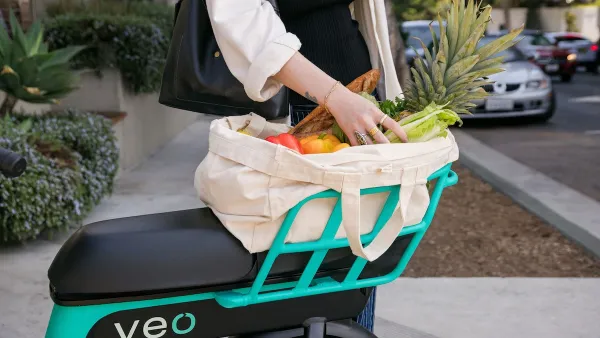A hospital in Columbus, Ohio, seeks to improve the lives of area residents by investing in the surrounding neighborhood.

Laura Bliss examines the relationships between hospitals and the communities in which they locate, with a focus on Nationwide Children’s Hospital in Columbus, Ohio. The Southern Orchards neighborhood around the hospital had been in decline for many years, and in 2008 Nationwide Children’s began investing in the community, starting with a real estate development initiative, reports Bliss:
Over the past nine years, Nationwide Children’s put $6 million into this combined effort, joining the city and other donors to [the] Healthy Neighborhoods, Healthy Families [initiative]; all told, what began as holding up its end of a tax deal became a nearly $23 million investment in 272 single-family homes and dozens of rental units around the South Side.
Bliss points out that Nationwide Children’s had incentives for investing in Southern Orchards. For one, an improved neighborhood is an employee benefit. In addition, improving the quality of life and health of area residents helps the hospital. Since it is reimbursed for each Medicaid and Medicare patient, rather than for services provided, healthier patients mean lower medical costs for the hospital.
However, the actual effects and outcomes of these investments remain somewhat unclear, reports Bliss. One of Nationwide Children’s next goals is getting a better sense of how improvements in the neighborhood have affected the health of children. “Over the next three years, the hospital will try to assess this by a number of metrics, including readmission rates, the number of emergency room visits, inpatient days, and the particular health issues kids from the neighborhood are bringing in,” says Bliss.
Bliss also says that development investments by Nationwide Children’s and hospitals in other cities have seen their fair share of controversies. In some places, projects have moved too slowly or the promised community benefits never materialized. Concerns about gentrification and displacement have also challenged development efforts. Advocates and researchers say measuring displacement of residents, developing strategies to prevent it, and figuring out ways to reconnect with displaced people should be goals at the forefront of future investment activities.
FULL STORY: When a Hospital Plays Housing Developer

Maui's Vacation Rental Debate Turns Ugly
Verbal attacks, misinformation campaigns and fistfights plague a high-stakes debate to convert thousands of vacation rentals into long-term housing.

Planetizen Federal Action Tracker
A weekly monitor of how Trump’s orders and actions are impacting planners and planning in America.

In Urban Planning, AI Prompting Could be the New Design Thinking
Creativity has long been key to great urban design. What if we see AI as our new creative partner?

King County Supportive Housing Program Offers Hope for Unhoused Residents
The county is taking a ‘Housing First’ approach that prioritizes getting people into housing, then offering wraparound supportive services.

Researchers Use AI to Get Clearer Picture of US Housing
Analysts are using artificial intelligence to supercharge their research by allowing them to comb through data faster. Though these AI tools can be error prone, they save time and housing researchers are optimistic about the future.

Making Shared Micromobility More Inclusive
Cities and shared mobility system operators can do more to include people with disabilities in planning and operations, per a new report.
Urban Design for Planners 1: Software Tools
This six-course series explores essential urban design concepts using open source software and equips planners with the tools they need to participate fully in the urban design process.
Planning for Universal Design
Learn the tools for implementing Universal Design in planning regulations.
planning NEXT
Appalachian Highlands Housing Partners
Mpact (founded as Rail~Volution)
City of Camden Redevelopment Agency
City of Astoria
City of Portland
City of Laramie





























